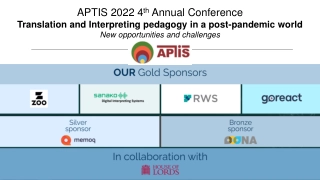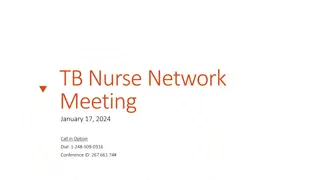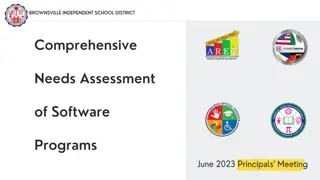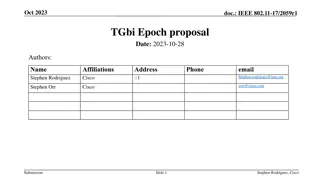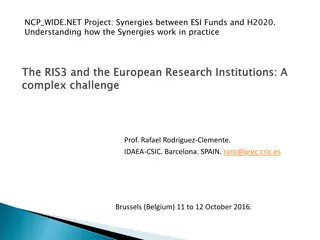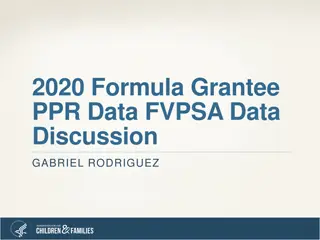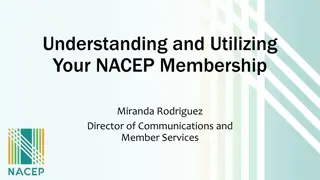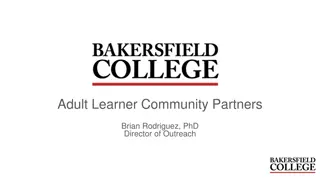
Supporting Geo-Replicated Internet Services with Wormhole
This paper discusses Facebook's design and implementation of Wormhole, a reliable pub-sub system for supporting geo-replicated internet services. It explores the importance of storing data efficiently, handling writes, and the unique solution Wormhole offers.
Download Presentation

Please find below an Image/Link to download the presentation.
The content on the website is provided AS IS for your information and personal use only. It may not be sold, licensed, or shared on other websites without obtaining consent from the author. If you encounter any issues during the download, it is possible that the publisher has removed the file from their server.
You are allowed to download the files provided on this website for personal or commercial use, subject to the condition that they are used lawfully. All files are the property of their respective owners.
The content on the website is provided AS IS for your information and personal use only. It may not be sold, licensed, or shared on other websites without obtaining consent from the author.
E N D
Presentation Transcript
1 WORMHOLE: RELIABLE PUB-SUB TO SUPPORT GEO-REPLICATED INTERNET SERVICES Presented By: Irving Rodriguez
Introduction 2 Facebook Social networking service Connects many people across the globe Allows them to share information with each other
Purpose of This Paper 3 Focus revolves around Facebook s design & implementation of Wormhole Maintain Availability Efficiency Reliability Scalability
Storing Data 4 Storing Data Anytime a user posts content, it is written to a database e.g (comments, likes, shares, posts, etc ) Stored on many different storage systems Get sharded and geo-replicated to multiple data centers
Why is this important? 5 Applications are interested when these writes occur Example: News Feeds are interested to serve new stories to friends Users receiving a notification may wish to immediately view the content Want to be notified when specific type of event changes occur Creation of an event Deletion of an object Writes to a certain association
Existing Approaches 6 Polling the Database Types Long Poll Intervals Issue: Leads to stale data Frequent Polling Intervals Issue: interferes with production workload
Existing Approaches (continued) 7 Publish-Subscribe Sytems Advantages Scalable Identify updates Transmit notifications to subscribers on events Disadvantages Require custom data stores that are interposed on writes Would require modifications across software stack Introduce intermediary storage system that might fail
Solution 8 Wormhole A pub-sub system that identifies new writes and publishes updates to all interested applications
How is this different? 9 What Wormhole does Upon a new write, wormhole encapsulates data and corresponding metadata Creates a custom Wormhole Update Always encoded as a set of key-value pairs Interested applications don t have to worry about where the underlying data lives Delivers this update to subscribers
Major Difference 10 Major Differences No need to create a custom data store Does not have to create custom modifications for each software stack Scalability
Key Terms 11 Publishers Producers Subscribers
Key Terms 12 Producers Produce data and write to datastores
Key Terms 13 Publishers Directly read the transaction logs maintained by the data storage systems, constructs updates, and sends them to subscribers of various applications
Key Terms 14 Subscribers The consumers interested in a particular event change that do application specific work
Architecture and Design 15 Storage Systems are geo-replicated One Master, Multiple Slaves Wormhole delivers updates to geo-replicated subscribers Piggybacking on publishers running slave replicas that are close to subscribers
Implementation - Data Model 16 Datasets Collection of related data (e.g. user generated data) Partitioned into shards for scalability Datastores collect these shards
Implementation Producers 17 On Write Data is written to the transaction log of the master replica It is then replicated asynchronously to the slaves Creates a Wormhole Update A key-value pair in a serialized format Different for each log type (e.g. RocksDB, MySQL, etc.) Publishers take care of translating them to standardized form
Implementation Publisher 18 Each datastore has 1 publisher Reads updates from the transaction log Filters updates Sends updates to the subscriber Wormhole publishers running on the slave Simply read new update off the local transaction log Provide updates to local subscribers
Implementation Subscribers 19 Subscribing applications are also sharded Links to a subscriber library Flow Subscribers receive a stream of updates for every shard Load Balance Single shards are always sent to one subscriber Not split amongst multiple subscribers API lives on the application OnShardNotice(), onUpdate(), onToken(), onDataLoss()
Implementation Tracking Updates 20 Datamarkers One per flow Created when subscriber acknowledges that an update has been processed Essentially a pointer in the datastore Indicates the position of last received update by the subscriber
Implementation Keeping Order 21 Example Assume we receive an update for a shard Then, all updates for that shard prior to the update received must have already been processed Otherwise, stored in caravans to be processed Think of this as a scheduler processing a queue from the transaction log by using the datamarkers
Fault Tolerance - Publisher 22 Wormhole provides multiple-copy reliable delivery Allows application to set primary and secondary sources where they may receive updates from On Failure Starts sending updates from one of the secondary publishers
Fault Tolerance - Subscriber 23 Publishers periodically store for each application the position of the most recent acknowledged update On Failure Wormhole find where to start sending update Uses the bookkeeping from the datastore s transaction log Resumes delivering updates
Reliability - SCRD 24 Single-Copy Reliable Datasets (SCRD) Leverages the reliability of TCP to ensure delivery (Underlying specifics not mentioned) Wormhole s guarantee that when an application is subscribed to the single copy of the data set Then it s subscribers have at least once received all updates contained within that data set in order
Reliability - MCRD 25 Multiple-Copy Reliable Datasets (SCRD) When SCRD fails permanently (hardware failure) Expect replicated datastores to take over and do SCRD where failure originated Essentially SCRD with publisher failover
Evaluation and Performance 26 Been in production for 3 years (Time of writing) Transports over 35GBytes/sec of updates 5 Trillion messages per day Transports 200GBytes/sec on failovers Averages around 600,000 updates/sec
How it Compares to Others 27 Most other solutions use Brokers Intermediate datastores that store and forward updates Difference Undesirable since they require additional infrastructure to support Add significant latency to message delivery
How it Compares to Others (cont.) 28 SIENA (pub-sub) Does not support replicated data sources Thialfi (Google) Not concerned about I/O efficiency Only cares about most recent data, does not backfill Kafka (LinkedIn) Average throughput is at 250MBytes/sec vs Wormhole s 35GBytes/sec Others Hedwig (Apache) IronMQ (Amazon) TIBCO Rendezvous
29 Questions?

